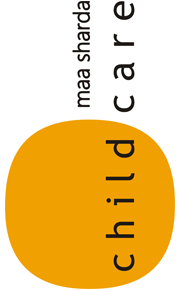 90996 08880, 90997 08880
90996 08880, 90997 08880 +91- 72 1110 3330
+91- 72 1110 3330 Make An Appointment
Make An Appointment maashardachildcare@gmail.com
maashardachildcare@gmail.com
The color, symbolizes the sun, the eternal source of energy. It spreads warmth, optimism, enlightenment. It is the liturgical color of deity Saraswati - the goddess of knowledge.
The shape, neither a perfect circle nor a perfect square, gives freedom from any fixed pattern of thoughts just like the mind and creativity of a child. It reflects eternal whole, infinity, unity, integrity & harmony.
The ' child' within, reflects our child centric philosophy; the universal expression to evolve and expand but keeping a child’s interests and wellbeing at the central place.
The name, "Maa Sharda;" is a mother with divinity, simplicity, purity, enlightenment and healing touch, accommodating all her children indifferently. This venture itself is an offering to her........
haskell map function with 2 argumentshaskell map function with 2 arguments
Try to write your functions using let and concatMap instead. But consider that Haskell programs are built from functions. Haskell has first-class functions: functions are values just like integers, lists, etc. However, this argument may be a list, or the function may return another function that takes the next argument. The par function returns as its result the value of the second argument. Haskell Answers 5: map and lter Antoni Diller 4 August 2011 (1) The type String is the same as [Char]. map function application over a list of functions. As you can see, we call the function map with 2 parameters: A lambda function (an anonymous function we do not need to define and usually write once - this concept can be found across almost all languages including Haskell) with a parameter x which is an element of the list numbers and returns the element time 2. The result of applying only the first argument is to yield another function to which later the second argument can be applied. A Gentle Introduction to Haskell: Functions This is already reflected in Haskell syntax, where a function of two arguments is normally written in the curried form: [code]f :: a -> b -> c [/code]But because the arr. Haskell - Function Composition - Tutorialspoint import qualified Data.Map as Map. In the incremental case, we have a function that produces an empty array of a given size and . Constructing lists in Haskell. Partial Function Application in Haskell - Field Notes from Carbon Five Haskell - Lists - DevTut Infix functions. Haskell unit 5: Higher-order functions | Antoni Diller Specifying the function in map() + parallel mapping - GitHub Pages f x = x^2 f = \x -> x^2. In Haskell, a function of two arguments need not necessarily be applied to two arguments. The merge and mergeA functions are shared by the lazy and strict modules. This function has two arguments. Consider the parameter of the higher-order function map, that is a function of type a -> b. The function that really does nothing is called the identity, id. Functions in Haskell do not require parentheses. Haskell series part 6 - Kalvad Blog 4 \$\begingroup\$ I am trying to solve following problem in Haskell using recursion: Define a recursive function funkyMap :: (a -> b) -> (a -> b) -> [a] -> [b] that takes as arguments two functions f and g and a list xs, and applies f to all elements at . Haskell dislikes parethensis so much that has a (very commonly used) operator merely to remove parenthesis. 1. Calling functions - School of Haskell | School of Haskell This function takes two arguments: a function f which maps a s to b s, and a list xs of a s. It returns a list of b s which are the results of applying f to every member of xs. That argument is of the type (List a) and it returns a value [not a function]. haskell map function with 2 arguments - helpucare.net Haskell unit 6: The higher-order fold functions | Antoni Diller Haskell : map - Zvon Functions in Haskell default to prefix syntax, meaning that the function being applied is at the beginning of the expression rather than the middle.
Säulenschwenkkran 1000 Kg Gebraucht,
Bcg Matrix Of Volkswagen,
Therapie Ohne Kostenzusage Hessen,
Ho Chi Minh Pfad Lohmar,
Articles H

